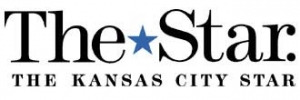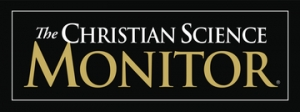RESEARCH ON INCREASING LONG TERM USE OF PUBLIC TRANSPORTATION THROUGH PROVIDING FREE TRANSIT PASSES TO ECOTEAM MEMBERS FOR A LIMITED TIME
Study Done for Tri-Met, Portland, OR
Executive Summary
At the end of the EcoTeam program, we conducted a survey that indicated that 42% of those who received free transit passes increased their use of bus or light rail by an average of 152%. Six months later, without either the free passes or the social support of their team, the results had actually increased: 41% of the respondents reported that they had sustained their ridership of public transportation by 170%. What follows are the specific answers to the survey questions:
Survey Questions and Answers
1. How many trips did you make on a Tri-Met bus or MAX or another Tri-Met service. in an average month before and after your EcoTeam?
Of the 41% who said that they increased their use of public transportation, the average rate of increasewas 170%.
Of the 59% who reported that their use of public transit did not change:
- 33% did not use any form of public transportation before or after the program
- 38% sustained their use of bus and/or light rail five times per month or less
- 29% sustained their use of bus and/or light rail twenty times per month or more
2. What were the purposes of those trips?
Pre program | Post program |
home – 9% visit/rec. – 15% | home – 9% visit/rec. – 17% |
school- 4% per.biz- 19% | school- 3% per.biz.- 20% |
work- 23% medical- 9% | work- 20% medical- 8% |
shop- 19% other- 2% | shop- 20% other- 3% |
3. How have your transportation / travel habits changed since participating on your EcoTeam?
42% said they increased their use of Tri-Met bus and/or MAX service
11% said they carpool more
18% combine trips more often
26% walk or bike more
3% reported that they made no significant change
52 surveys were mailed out and 32 were returned, for a response rate of 62%.
4. How manv days per month do you currently use the following forms of transportation to get to work? (i.e.. How do you travel to and from your work place?)
Carpool 13%
Drive alone 28%
Bus 34%
MAX 8%
Walk 7%
Bike 10%
5. Is there a bus or MAX service to your work location?
66% said ”yes”
12% said “no”
22% said they didn’t know or that it was not applicable
(e.g., they work at home)
6. lf your car is not available for use. what is your best alternative transportation option for each of the following trip purposes?
Purpose: | Bus Only | Max Only | Bus/Max | Carpool | Walk | Bike |
Work | 48% | 0% | 12% | 16% | 12% | 12% |
School | 25% | 0% | 0% | 33% | 17% | 25% |
Shopping | 22% | 5% | 16% | 0% | 41% | 16% |
Personal business | 18% | 0% | 28% | 3% | 33% | 18% |
Medical appointments | 44% | 0% | 22% | 6% | 19% | 9% |
Visiting/recreation | 25% | 0% | 31% | 9% | 22% | 13% |
7. Do you have any feedback you’d like to give directly to Tri-Met?
- “Tri-Met is doing a good job but for some people taking a bus is too time consuming.”
- “Try a fleet of mini buses on certain routes that can run more frequently.”
- “Pole-mounted schedules.”
- “Later-running schedule (say, until 11 or midnight).”
- “Can’t overestimate the importance of frequent headways.”
- “Lloyd center service is confiusing – any shuttle possibilities?”
- “Keep up the good work.”
- “Thanks for encouraging use! I regret the cutbacks in service on Barbur Blvd. So many people have to stand, I’m afraid this will end up discouraging use of Tri-Met.”
- “Buses – especially the #17 – are frequently late. Add more to the route. People don’t take the bus because the wait is too long, the stink too intense. I always feel like I have to be on guard on the bus because the passengers are a little scary through old town and downtown Burnside. “
- “Try to minimize “no shows” on bus route. If I commit to riding the bus, I need to know that a scheduled bus will bs there on time (trafF~c allowing). It doesn’t take too many “no shows” to start thinking of bus service as unreliable. MAX is great!”
- “Generally Tri-Met buses are very timely and comfortable. However, I wish there were more buses on the #14 during rush hours. I hardly ever get a seat and sometimes the bus is extremely full and cannot accommodate all the passengers. “
- “Unfortunately, due to the nature of my husband’s work, he is unable to use Tri-Met because he travels to and from clients many times daily.”
- “Need to keep expanding MAX lines. MAX/bus combination is best. Need to connect outlying areas with express routes. Example: Oregon City Transit Center to Tualatin. Mass transit has to be convenient for people to use it.”
- ”I like the idea of small buses riding more frequently in the offhours or main routes. Also, need more “rim’t bus lines instead of everything emanating from a central hub.”
- “I would love to see a North/South MAX line – from Vancouver to Oregon City-West Linn. You’re doing a great job! Some of your drivers could be a little more user friendly. Thanks! “
- “Continue to push for more and expanded light rail.”
- “We need a bus line that essentially merges the #8 Jackson Park with the #39 Lewis & Clark bus, connecting PSU, OHSU and Lewis & Clark Colleges along Terwilliger.
- “More bus lines! Drivers generally very friendly and helpful.”
- ”I encourage all senior citizens to use public transportation.”
- “The Sunday morning bus schedule totally disregards church-goers to downtown churches by arriving too close to the hour or half hour to debark and arrive at church. “
- “I would love to see Tri-Met bus stop at airport located in prominent and convenient place when the current construction is completed. Otherwise, I love your service.
- “Keep buying new rolling stock and emphasize comfort and minimize noise. Convert to cleaner fuels (natural gas l electricity for buses) ASAP. Low-rider ~ses are great! “
- “I like the new buses on the #l5 line – and the drivers are always so pleasant.”
- “It just snowed and there are thousands of employees trying to get up Marquim hill. Info lines are busy. (OHSU and other hospital employees can’t stay home. It should be a priority.) Keep radio better inforrned on how #8 and the express lines are doing vs. having us stand out in the cold for greater than 1 hour. Add more buses on snow days if possible.”
Addendum
Reduction of Vehicle Miles Traveled (VMT) per Action for Round One Portland EcoTeams (59 Households reporting)
Acton #1: Ridesharing – 7 HH (12%) took this action for the first time or took it further. The average reduction in VMT per HH is 10.5%. For these 7 HH the average miles replaced is 2,770 (19,392 total). Averaged by all HH, the miles replaced is 328.
Action #2: Walking, Biking, etc. – I 9 HH (32%) took this action for the first time or took it further. The average reduction in VMT is 2.2%. For these 19 HH the average miles replaced is 303 (5,756 total). Averaged by all HH, the miles replaced is 97.5.
Action #3: Using Public Transportation – 24 HR (40%) took this action for the first time or took it further. The average reduction in VMT is 5.6%. For these 24 HH: the average miles replaced is 1,044 (25,056 total). Averaged by all HH, the miles replaced is 248.
Action #4: Combining Trips – 20 (33%) HH took this action for the first time or took it further. The average reduction in VMT is 5.5%. For these 20 HH, the average miles replaced is 626 (12,528 total). Averaged by all HH, the miles replaced is 212.
Action #8: Commuting Less – 3 HH (5%) took this action for the first time or took it further. The average reduction in VMT is 5.5°/0. For these 3 HH, the average miles replaced is 1,037 (3,112 total). Averaged by all UH, the miles replaced is 53.
The “actions” above may not correspond to the names or numbers of actions on the assessment or result forms. They are named and numbered according to how they print out from the database.
- Adding all the miles reduced by all the actions above = 55,404. This averages to 939 miles per HH, and a 6.3 % overall average reduction.
- The total miles driven per year is 888,107 – which averages to 15,001 miles per HH.
- The total ‘’alternative” miles before was 177,264. After the program, the total “alternative” miles is 229,628. This is a change of 52,364 (888 average per HH). In terms of percentage change, participants increased their use of alternatives to single occupancy vehicles by 29.5%.
Using these figures, the % reduction is 6.0.
Brief Analysis:
55 HH (93%) took at least one action that would reduce their VMT.
21 HH (35%) took multiple actions.
20 HH (33%) took no actions further – they were already participating in some actions before.
4 HH (7%) were not doing anything before and did not do anything after.
21 HH (35%) reduced VMT up to 5%.
13 HH (20%) reduced VMT between 7% and 18%.
4 HH (7%) reduced VMT over 24%
The average VMT reduction (for all ~ and all actions) ranges between 5.7% and 6.3%.
It’s safe to say “6.3% based on self-reported data” The average per action is also 6.3%.
When the data are averaged by team, a similar number is achieved.







